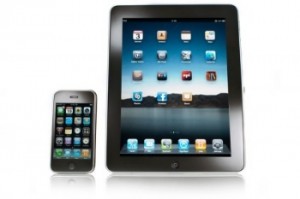
How will companies leverage new sensor input from mobile devices to accelerate and stream-line workflow in the accounting department?
If the iPhone opened the door to the possibilities of mobile applications, the iPad has kicked the door off of its hinges!
The first wave of enterprise mobile apps essentially is just porting capabilities from the desktop apps to a mobile device. This is kind of like the “screen-scraping” trend that existed in the 1990s’ during the first part of the transition from mainframe computing to client-server computing. And just as screen-scraping was only a stepping stone, so too is taking web-pages and reformatting their content for display on mobile devices. This is not the future.
For the most part, previous enterprise application development has taken for granted that applications would be used by workers sitting at desks and primarily using keyboards for data input. Porting these applications to a tablet is a step forward – and proving to be challenging for a host of reasons. But neither does this expose the potential of what is possible.
The real future of enterprise mobile applications will:
1. Leverage the many available sensors that existing on mobile devices (gps, camera, microphone, etc.. — and others that will arrive: infra-red, air pressure, temperature, humidity…), and
2. Combine sensor input with workflow / app functionality / rules-based systems to enable NEW types of applications.
Instead of just having a keyboard for data input, mobile devices can see and hear things… they know where they are, and “when” they are… All of this input is available to be used in real-time.
So, the technology today enables capabilities that for the most part enterprises don’t have a roadmap on how to leverage.
How to move forward? Enterprises need to create mobility swat-teams to examine how workflow, departmental value propositions and customer interactions can be accelerated, steam-lined and simplified with these NEW mobile applications.
Separately, I would suspect the biggest developments in mobile applications will be made in networking device-embedded applications as much as, or more than, apps for people to use on devices carried by people. We’ve already seen some of this with RFID and active Wi-Fi asset tags. But we’ll see much, much more development here very quickly.

The Undude lives in New England. By day, he successfully markets enterprise software, and by night he plays a brutalized guitar in an unsuccessful rock band. When he’s not in conference calls, moving information from PowerPoint to Excel and then back to PowerPoint, or pondering the significance of his insignificance, The Undude is passionate about music, unnecessary technology and finding a good parking spot.








